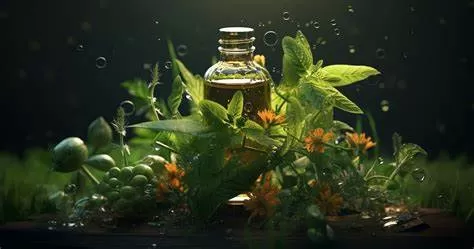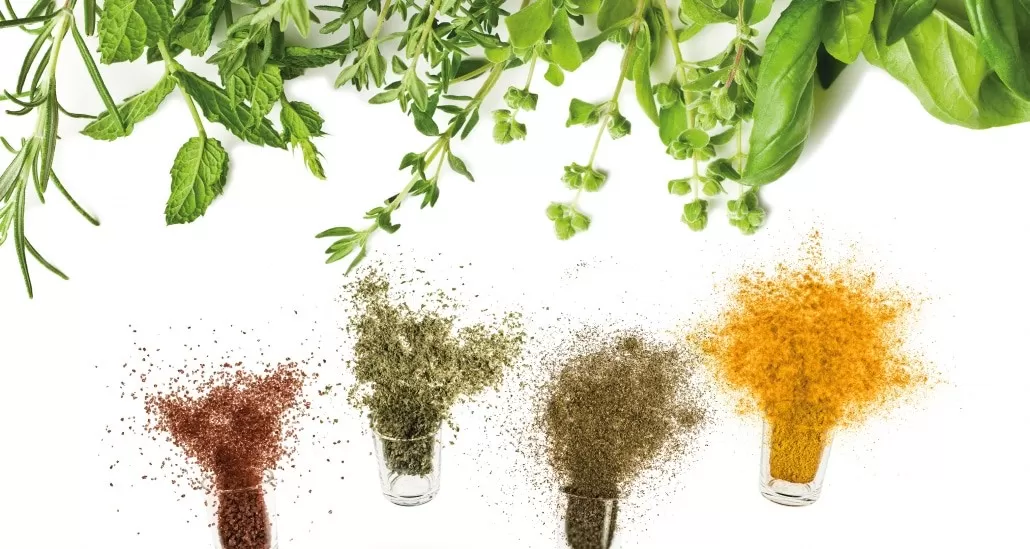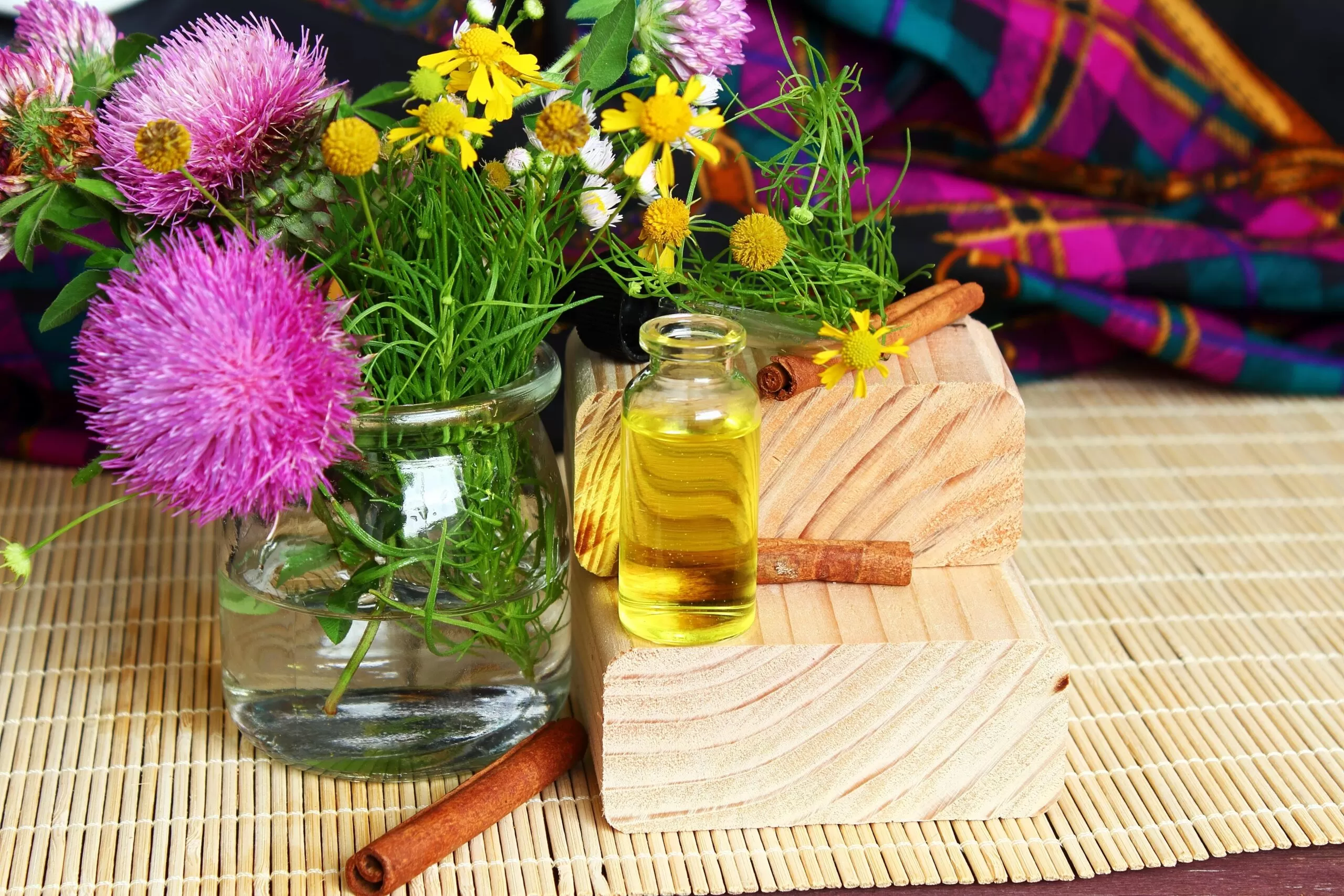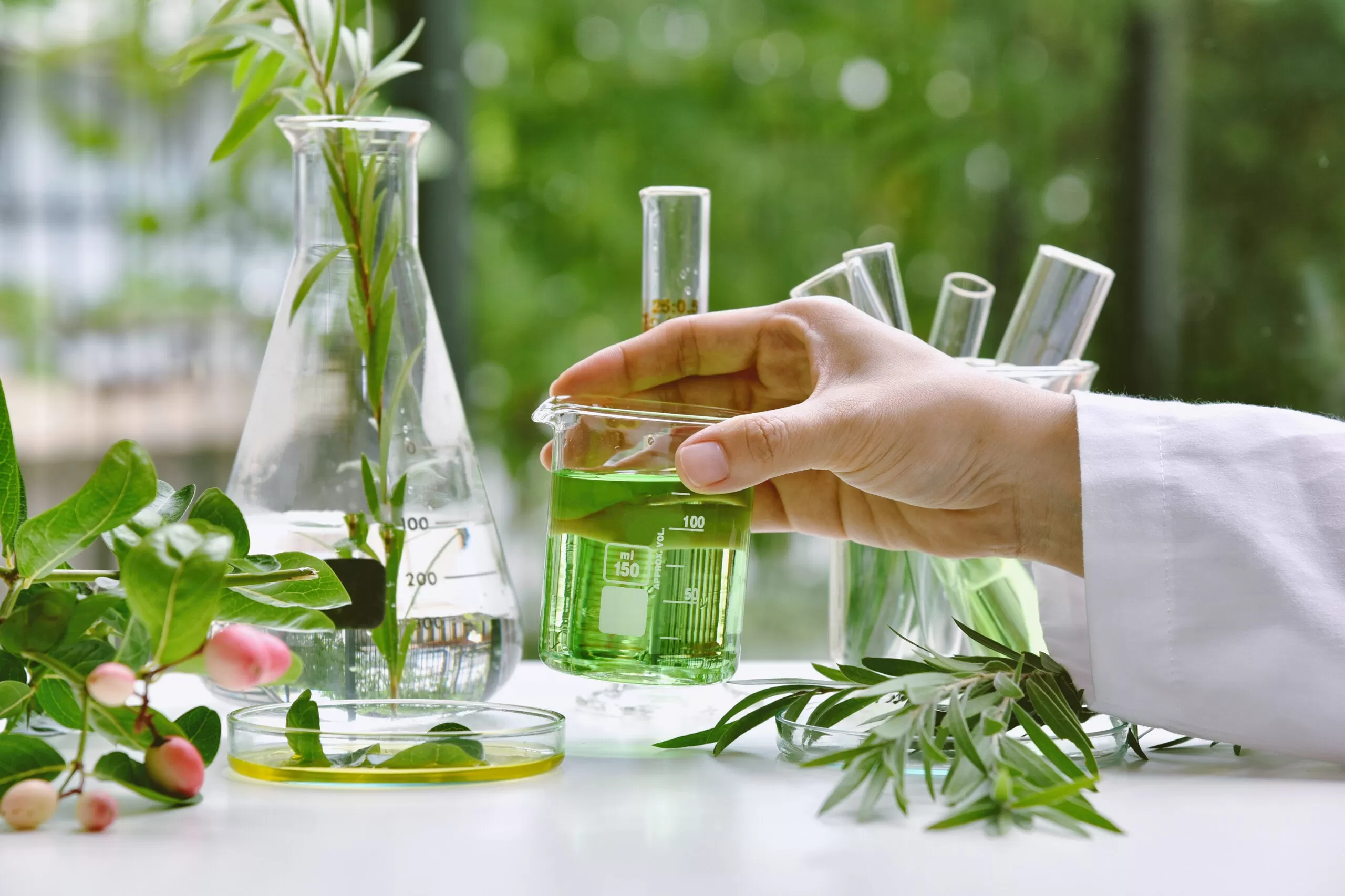- 0086-571-85302990
- sales@greenskybio.com
Balancing Tradition and Technology: Modernizing Solvent Extraction for Herbal Medicines
2024-08-19
1. Introduction
Herbal medicines have been an integral part of human healthcare for centuries. The knowledge of using plants for medicinal purposes has been passed down through generations in different cultures. Solvent extraction is a crucial process in obtaining the active compounds from herbal materials. However, as the world is advancing technologically, there is a need to modernize this traditional process while still retaining the essence of traditional herbal knowledge.
2. Traditional Solvent Extraction in Herbal Medicines
2.1 Historical Roots
The use of solvents to extract active ingredients from herbs dates back to ancient times. Early civilizations such as the Chinese, Indian, and Egyptian civilizations were among the first to explore the use of various solvents like water, alcohol, and oils. For example, in traditional Chinese medicine, alcohol has been used for centuries to extract the beneficial components from herbs. The process was often based on empirical knowledge, passed down from herbalists to their apprentices.
2.2 Common Traditional Solvent Extraction Methods
- Maceration: This is one of the simplest and oldest methods. It involves soaking the herbal material in a solvent for an extended period, usually several days to weeks. The solvent gradually penetrates the plant cells and dissolves the desired compounds. For instance, when making a tincture of a certain herb, the herb may be macerated in alcohol for about two weeks.
- Percolation: In this method, the solvent is continuously passed through a bed of the herbal material. It is a more dynamic process compared to maceration. The solvent is allowed to slowly drip through the herb, extracting the active substances as it moves. This method can be more efficient in terms of time compared to maceration.
3. The Need for Modernization
- Quality Assurance: Traditional methods may not always provide consistent quality of the extracts. Factors such as the variability in the source of herbs, extraction time, and solvent quality can lead to differences in the composition of the extracts. Modern technology can help in standardizing these processes to ensure a more consistent product quality.
- Efficiency: Traditional extraction methods can be time - consuming. With the increasing demand for herbal medicines in the modern world, there is a need to find more efficient ways of extraction. Modern extraction techniques can significantly reduce the extraction time, allowing for larger scale production.
- Safety: Some traditional solvents may pose health risks if not properly purified or if residues are left in the final product. Modern technology can help in using safer solvents or in ensuring the complete removal of solvent residues, thus enhancing the safety of herbal medicine products.
4. Modern Technologies in Solvent Extraction
4.1 Supercritical Fluid Extraction (SFE)
Supercritical fluid extraction has emerged as a promising modern technique. Supercritical fluids, such as carbon dioxide (CO₂), have properties that are intermediate between a gas and a liquid. At supercritical conditions, CO₂ has a high diffusivity, low viscosity, and can be easily removed from the extract. This makes it an ideal solvent for extracting herbal compounds. It can selectively extract specific compounds based on the pressure and temperature conditions. For example, it can be used to extract essential oils from herbs with high purity and without the use of toxic solvents.
4.2 Microwave - Assisted Extraction (MAE)
Microwave - assisted extraction utilizes microwave energy to heat the solvent and the herbal material. This results in a rapid increase in temperature, which in turn accelerates the extraction process. The microwaves cause the plant cells to rupture more quickly, allowing the solvent to access the intracellular compounds more easily. MAE can significantly reduce the extraction time compared to traditional methods. For instance, in the extraction of flavonoids from certain herbs, MAE can complete the process in a few minutes, while traditional methods may take hours or even days.
4.3 Ultrasound - Assisted Extraction (UAE)
Ultrasound - assisted extraction uses ultrasonic waves to create cavitation bubbles in the solvent. When these bubbles collapse, they generate high - intensity shock waves and micro - jets that disrupt the plant cells. This enhances the mass transfer between the solvent and the herbal material, increasing the extraction efficiency. UAE is a relatively simple and cost - effective method. It has been successfully used in the extraction of alkaloids from various herbs, improving the yield of the desired compounds.
5. Integrating Technology and Tradition
- Preserving Traditional Knowledge: While adopting modern technologies, it is crucial to preserve the traditional knowledge of herbal medicine. The understanding of which herbs are used for which ailments, the appropriate harvesting times, and the traditional extraction methods can provide valuable insights for modern extraction processes. For example, traditional knowledge about the synergistic effects of different herbs can be used to develop more effective herbal medicine formulations even with modern extraction techniques.
- Combining Traditional and Modern Solvents: Instead of completely replacing traditional solvents, modern technology can be used to optimize their use. For instance, in some cases, a combination of water (a traditional solvent) and a modern surfactant can improve the extraction efficiency while still maintaining the natural characteristics of the herbal extract.
- Quality Control Based on Traditional Criteria: Modern quality control methods can be designed to incorporate traditional criteria for herbal medicines. For example, in addition to modern chemical analysis, traditional methods of evaluating the appearance, smell, and taste of herbal extracts can be used to ensure the overall quality of the product.
6. Challenges in Modernizing Solvent Extraction
- Cost: Many modern extraction technologies, such as supercritical fluid extraction, require expensive equipment and high - energy consumption. This can increase the cost of production, making it difficult for small - scale herbal medicine producers to adopt these technologies. There is a need to find ways to reduce the cost, such as through shared facilities or government subsidies.
- Technical Expertise: Operating modern extraction equipment requires specialized technical expertise. Herbal medicine producers may need to invest in training their staff or hiring qualified technicians. The lack of such expertise can be a significant barrier to the adoption of modern extraction technologies.
- Regulatory Compliance: The use of modern solvents and extraction techniques may require compliance with new regulatory requirements. This can be a complex process, especially for traditional herbal medicine producers who may be more accustomed to less - regulated traditional methods. Ensuring compliance with safety, quality, and environmental regulations is essential but can be challenging.
7. Future Prospects
- Research and Development: There is still much room for research in the field of modernizing solvent extraction for herbal medicines. Future research could focus on developing more efficient and cost - effective extraction techniques, as well as on exploring new solvents that are both safe and effective. For example, the study of ionic liquids as potential solvents for herbal extraction is an area of active research.
- Green Extraction Technologies: As environmental concerns grow, the development of green extraction technologies will be crucial. This includes the use of renewable solvents, reducing energy consumption, and minimizing waste generation. Technologies like enzyme - assisted extraction, which can be more environmentally friendly, may gain more popularity in the future.
- Globalization of Herbal Medicines: With the increasing globalization of herbal medicines, modernized extraction processes can help in meeting international quality and safety standards. This can lead to increased acceptance and consumption of herbal medicines worldwide, promoting the growth of the herbal medicine industry.
8. Conclusion
Modernizing solvent extraction for herbal medicines is a complex but necessary task. By balancing tradition and technology, it is possible to enhance the quality, efficiency, and safety of herbal medicine production. While there are challenges in adopting modern technologies, the potential benefits are significant. Continued research, investment in training, and support from regulatory authorities can help in the successful modernization of solvent extraction processes in the herbal medicine industry, ensuring that these traditional remedies can continue to play an important role in modern healthcare.
FAQ:
1. What are the traditional methods of solvent extraction in herbal medicines?
Traditional solvent extraction methods in herbal medicines often include maceration, percolation, and Soxhlet extraction. Maceration involves soaking the herbal material in a solvent for a period of time to allow the active compounds to dissolve. Percolation is a process where the solvent is passed through the herbal material continuously. Soxhlet extraction uses a reflux condenser to repeatedly extract the active components from the herbal material with a solvent.
2. How can modern technology improve the efficiency of solvent extraction in herbal medicines?
Modern technology can improve the efficiency in several ways. For example, the use of microwave - assisted extraction can speed up the extraction process by heating the solvent and herbal material rapidly and uniformly. Ultrasonic - assisted extraction uses ultrasonic waves to disrupt the cell walls of the herbal material, increasing the release of active compounds and thus enhancing extraction efficiency. Supercritical fluid extraction, which uses supercritical fluids like carbon dioxide as solvents, offers better selectivity and faster extraction rates compared to traditional solvents.
3. What are the challenges in maintaining the essence of traditional herbal knowledge during modernization of solvent extraction?
One of the main challenges is that traditional herbal knowledge is often based on empirical experience over a long period. When modernizing solvent extraction, there is a risk of losing some of the subtleties in the traditional understanding of the herbs. For example, the specific choice of solvents in traditional methods might be related to a holistic view of the herb's properties that could be overlooked in modern, more technologically - driven approaches. Also, the traditional extraction processes might be part of a larger cultural and medicinal system, and it can be difficult to preserve these intangible aspects while adopting new technologies.
4. How does modernizing solvent extraction enhance the safety of herbal medicine production?
Modernizing solvent extraction can enhance safety in multiple ways. Newer extraction methods can better control the quality of the solvents used, reducing the risk of contamination from harmful residues. For example, in supercritical fluid extraction with carbon dioxide, there is no solvent residue left in the final product as carbon dioxide can be easily removed. Advanced purification techniques associated with modern extraction methods can also remove impurities and toxins more effectively, ensuring a safer herbal medicine product.
5. What are the potential impacts of modernizing solvent extraction on the quality of herbal medicines?
The modernization can have significant positive impacts on quality. By using more precise and efficient extraction methods, a higher yield of active compounds can be achieved, which directly affects the potency of the herbal medicine. Moreover, modern techniques can better preserve the integrity of the active compounds during extraction, preventing their degradation. This results in a more consistent and higher - quality herbal medicine product.
Related literature
- Advanced Solvent Extraction Techniques for Herbal Medicines"
- "Traditional Herbal Knowledge and Modern Extraction Technologies: A Review"
- "The Role of Modernization in Solvent Extraction for Herbal Medicine Quality Enhancement"
- ▶ Hesperidin
- ▶ citrus bioflavonoids
- ▶ plant extract
- ▶ lycopene
- ▶ Diosmin
- ▶ Grape seed extract
- ▶ Sea buckthorn Juice Powder
- ▶ Beetroot powder
- ▶ Hops Extract
- ▶ Artichoke Extract
- ▶ Reishi mushroom extract
- ▶ Astaxanthin
- ▶ Green Tea Extract
- ▶ Curcumin Extract
- ▶ Horse Chestnut Extract
- ▶ Other Problems
- ▶ Boswellia Serrata Extract
- ▶ Resveratrol Extract
- ▶ Marigold Extract
- ▶ Grape Leaf Extract
- ▶ blog3
- ▶ blog4
- ▶ blog5
-
Are plant extracts good for you?
2024-08-19
-
What are plant-based extracts?
2024-08-19
-
What Is a Plant Extract? A Deep Dive
2024-08-19
-
How Does Plant Extraction Work?
2024-08-19
-
Why Plant Extracts Are So Necessary
2024-08-19
-
What Plant Extracts Are
2024-08-19
-
Europen Bilberry Extract
2024-08-19
-
Coconut Water Powder
2024-08-19
-
Shikone Extract
2024-08-19
-
Troxerutin
2024-08-19
-
Chaste Berry Extract
2024-08-19
-
Mulberry Extract
2024-08-19
-
Eyebright Extract
2024-08-19
-
Hesperidin
2024-08-19
-
Angelica sinensis extract
2024-08-19
-
Alisma Extract
2024-08-19


























